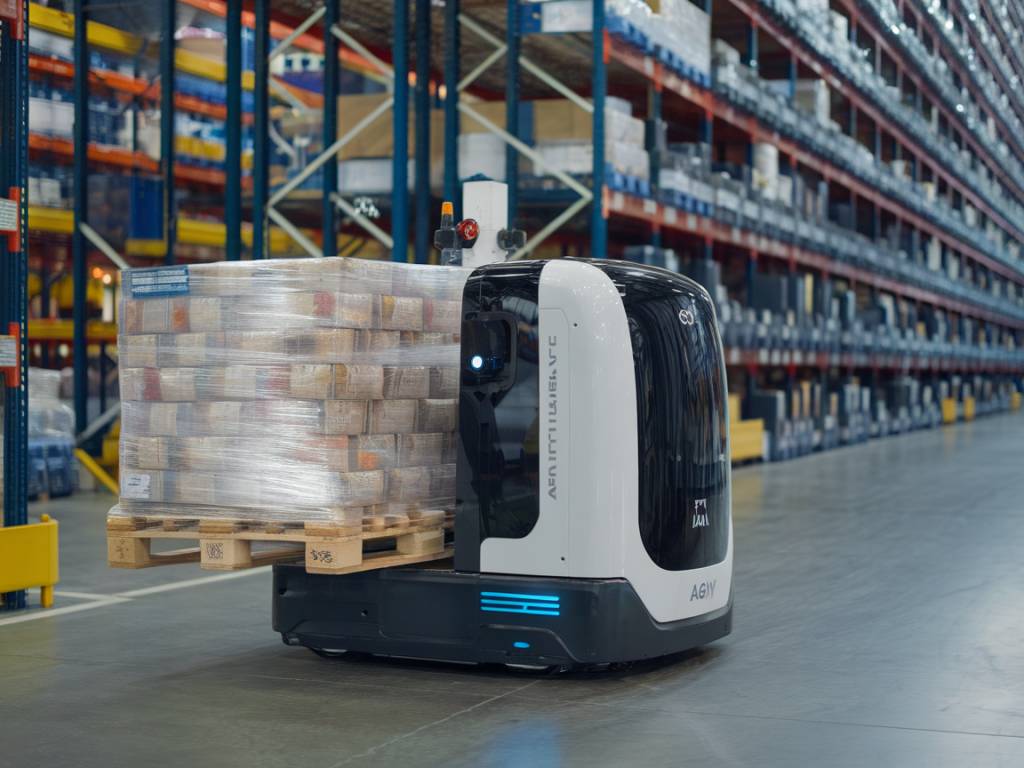In recent years, the logistics and supply chain industry has experienced a significant transformation due to technological advancements. One of the most notable innovations is the implementation of Automated Guided Vehicles (AGVs) in warehouses. These self-guided vehicles are designed to transport materials and goods within a warehouse without human intervention. This article delves into the myriad benefits of AGVs, highlighting their impact on warehouse operations, efficiency, and overall productivity.
Increased Efficiency and Productivity
One of the key advantages of using AGVs in warehouses is the notable increase in efficiency and productivity. AGVs can operate around the clock, without the need for breaks, thereby significantly improving the throughput of warehousing operations. These vehicles can quickly and precisely transport goods from one location to another, reducing the time and effort required for manual handling.
Furthermore, AGVs can be programmed to follow the most efficient paths within a warehouse, allowing for optimized traffic flow and minimizing the potential for bottlenecks. By integrating AGVs with Warehouse Management Systems (WMS), businesses can ensure efficient coordination and synchronization of warehouse activities, leading to a seamless workflow.
Enhanced Safety
Safety is a paramount concern in warehouse environments. Accidents and injuries can lead to significant downtime, increased costs, and even legal liabilities. AGVs contribute to enhanced safety in several ways:
- Reduction in Human Error: AGVs are equipped with advanced sensors and navigation systems that enable them to detect obstacles and avoid collisions. This minimizes the risk of accidents caused by human error.
- Consistent Performance: Unlike human workers who may become fatigued or distracted, AGVs consistently perform their tasks with precision, reducing the likelihood of errors.
- Hazardous Material Handling: AGVs can be employed to handle hazardous materials, reducing the risk of human exposure and ensuring compliance with safety regulations.
Cost Savings
Implementing AGVs can lead to significant cost savings for warehouse operations. Although the initial investment in AGVs and related infrastructure may be substantial, the long-term benefits often outweigh the costs. Some key areas of cost savings include:
- Labor Costs: AGVs can take over repetitive and time-consuming tasks, allowing warehouse staff to focus on higher-value activities. This can lead to a reduction in labor costs.
- Reduced Damage: AGVs are programmed to handle goods with care, minimizing the risk of damaging products during transportation. This can result in lower costs associated with damaged goods and returns.
- Operational Efficiency: As AGVs enhance efficiency and productivity, businesses can achieve cost savings through optimized resource utilization and reduced operational redundancies.
Scalability and Flexibility
AGVs offer a high degree of scalability and flexibility, making them suitable for warehouses of various sizes and complexities. As business needs evolve, AGVs can be easily scaled up or down to match the required capacity. This adaptability allows businesses to respond swiftly to changing market demands without significant disruptions to their operations.
Additionally, AGVs can be reprogrammed to perform different tasks based on seasonal variations or shifts in product lines. This flexibility ensures that warehouses can remain agile and responsive to dynamic business environments.
Data and Analytics
AGVs are equipped with advanced technologies that generate valuable data on warehouse operations. This data can be harnessed to gain insights into various aspects of warehouse performance, including:
- Inventory Management: AGVs can provide real-time updates on inventory levels, enabling businesses to maintain optimal stock levels and reduce the risk of stockouts or overstocking.
- Operational Efficiency: By analyzing data on AGV movements and task completion times, businesses can identify bottlenecks and areas for improvement in their warehouse processes.
- Predictive Maintenance: Data from AGVs can be used to predict maintenance needs and schedule timely repairs, reducing downtime and prolonging the lifespan of the vehicles.
Environmental Benefits
With growing emphasis on sustainability, businesses are increasingly seeking ways to reduce their environmental footprint. AGVs contribute to environmental sustainability in several ways:
- Reduced Energy Consumption: AGVs are often powered by batteries or other energy-efficient sources, leading to lower energy consumption compared to traditional warehouse equipment.
- Optimized Resource Utilization: By enhancing efficiency and minimizing waste, AGVs can contribute to more sustainable warehouse operations.
- Lower Emissions: AGVs produce fewer emissions compared to conventional warehouse vehicles, contributing to improved air quality and reduced greenhouse gas emissions.
Implementation Challenges and Considerations
While the benefits of AGVs are substantial, businesses should also be aware of the potential challenges associated with their implementation:
- Initial Investment: The upfront cost of purchasing AGVs and upgrading warehouse infrastructure can be significant. However, businesses should consider the long-term return on investment (ROI).
- Technological Integration: Integrating AGVs with existing WMS and other technologies may require specialized expertise and can be complex.
- Maintenance and Upkeep: Regular maintenance is crucial to ensure consistent performance of AGVs. Businesses should establish a comprehensive maintenance plan.
- Training and Adaptation: Employees may need training to work alongside AGVs and to adapt to new processes and workflows.
In conclusion, Automated Guided Vehicles (AGVs) offer a myriad of benefits for warehouses, including increased efficiency, enhanced safety, and significant cost savings. Their scalability, flexibility, and ability to generate valuable data further underscore their importance in modern warehousing. Despite the initial investment and potential challenges, the long-term advantages of AGVs make them a worthwhile consideration for businesses looking to optimize their warehouse operations.




